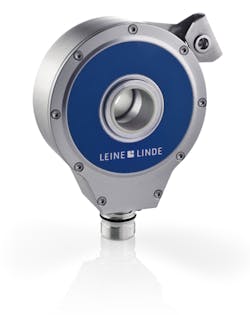The ability to drive long cables and meet the high and low level voltage requirements for the transmitted signal is what sets the Leine & Linde High Current TTL (HC-TTL) output circuitry apart from its competition.
The length of cable an encoder is capable of driving depends upon many factors. The cable type, mechanical properties, and overall length determine the capacitance and resistance the encoder output drive electronics must handle. This type of load will ultimately limit the amplitude and frequency of a signal transmitted.
In the 700 or 800 series encoders, the HCHTL outputs can drive a 0-30V square-wave signal with frequency of 100kHz. Signal quality exceeds industry standards for voltage amplitude and signal rise-time while driving as much as 350 meters (~1150 ft) of cable when terminated into a 40ma resistive load. Signal integrity is maintained with temperatures ranging from -40 to 85 degrees Celsius.
Lower frequencies would allow for even longer cables.
>> For more information on this product, click here
